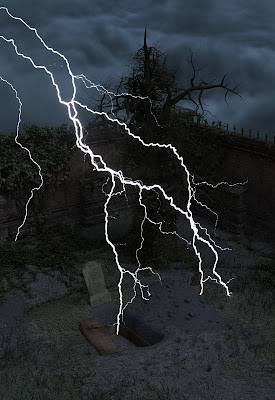 |
| Credit: Pixabay.com |
I apologise for having skipped one more week than I had said in my last post. Last weekend a situation came up that held me back. That said, I also apologise for posting this Book-To-Movie so late in the month. For any of you who are new to my blog, the Book-To-Movie normally occurs every third weekend, this month of February excepted. A Book-To-Movie is a review of a work of prose fiction and its movie adaptation. This month we are reviewing Edgar Allan Poe’s short story, “The Premature Burial” and the Roger Corman movie adaptation of it, both of which intentionally plays with the borderline between reality and fantasy.
Roger Corman was one of the most dedicated directors of Edgar Allan Poe movies in the 1960s as well as all time. Within a 10-year span, he produced nine movie adaptions of some of Edgar Allen Poe’s most famous works. Even though many of these movies went far from the original stories, Corman often did at least one thing that Poe did: use the technique of deliberately confusing reality with fantasy. And Corman does a convincing job of this in his adaptation of “The Premature Burial”.
‘The Premature Burial’ Short Story
Poe’s “The Premature Burial” is the narrator’s account of his extreme phobia of being buried alive, a phobia that turns into the real thing. Or does it? This question is what causes us to often question many of Poe’s characters’ sanity and therefore ask whether what they encounter is real or not. In “Premature Burial”, the narrator goes through several extremes to avoid being accidently buried alive. However, he often questions the efficiency of these extremes. Still, he has good justification for his paranoia, even if it drives him to near insanity--he is cataleptic.‘The Premature Burial’ Movie
Corman’s movie has all the gothic elements of Poe’s story, in some cases even more. There’s a haunted house setting that is a multigenerational family estate, in which this element is not in Poe’s story and so is the “more”. However, like the original story there is a graveyard and a family vault. There’s also a kind of curse of (guess what?) Catalepsy. The protagonist in the film, Guy Carrrell (played by Ray Milland), comes from a family with a history of this disorder. Even though his doctor says that the illness is not inheritable, Guy is not convinced. He believes that his father was buried alive due to catalepsy and that the same fate will come to him. So, who do we really believe, him or his doctor?Like it does the short story, the theme of paranoia runs throughout the movie. The movie does a good job of conveying the protagonist’s tormenting fear making the audience sympathise with him and so adds to the terror effect. While the short story uses a historical style of accounts to convince readers of the protagonist’s possible fate of a premature burial, the movie does this by relying on Guy’s psychology but one that is convincing since we are often in his head. However, everyone else in the movie thinks Guy is going mad, especially when he and the audience sees phantom-like characters such as grave robbers seeming to appear out of nowhere and pursuing him.
Besides questionable hallucinations, Corman’s movie contains a nightmare sequence as does Poe’s story. Even though the film’s nightmare scene happens to not remove the dividing line between reality and fantasy as much as the story does, the sequence is most exemplary of Corman’s style of filming with the use of filtered colouring. An eerie green light floods the scene. This and the rapidly changing angled camera shots enhance the surrealism of the nightmare and intensifies it along with the whole movie.
The techniques Corman uses in his movie make it live up to the quality of “The Premature Burial” short story, one of Edgar Allen Poe’s most famous tales. As Poe does with his story, Corman makes his film convince audiences of the possibility of being buried alive and uses elements that define true gothic horror. One of these elements is the playing with the reality/fantasy borderline.
Have you read Poe’s “The Premature Burial”? Have you seen the Roger Corman movie adaptation? Which do you think tells the story better? Feel free to put your answers or other comments in the box below.
Until next time . . .
Corman always was out there.
ReplyDeletePoe and Lovecraft actually had a lot in common with their story themes.
Right. I believe Lovecraft was influenced by Poe's work. The big difference is that most of Lovecraft's work was more science fictional (e.g. the gods were aliens from space) and Poe's was more supernatural. Yet they both used Gothic elements and were both horror.
Delete